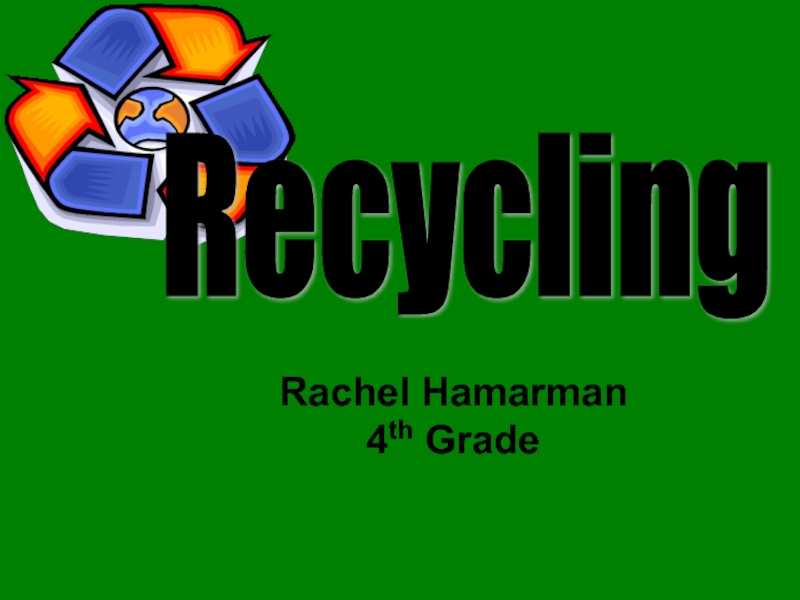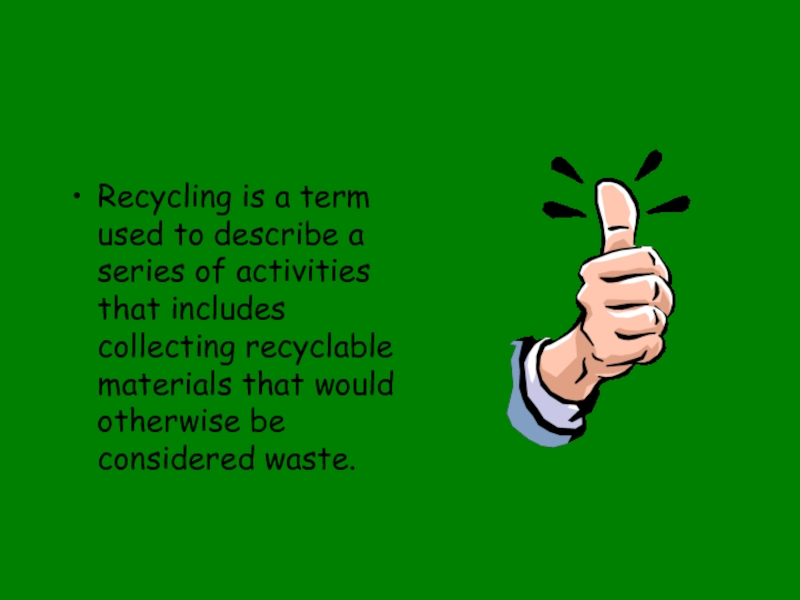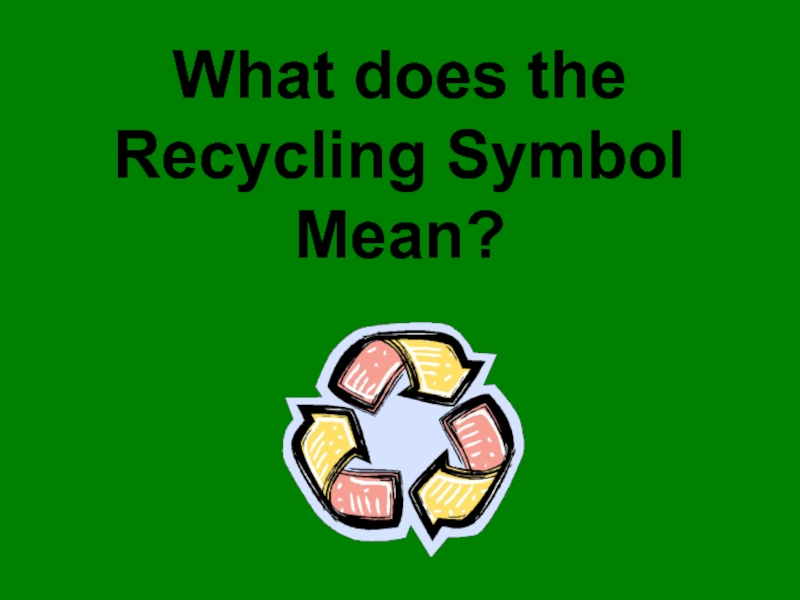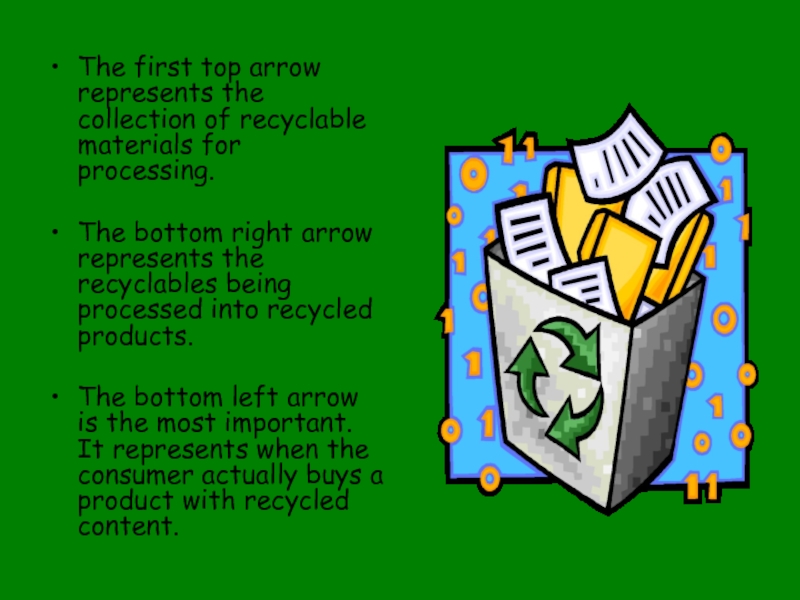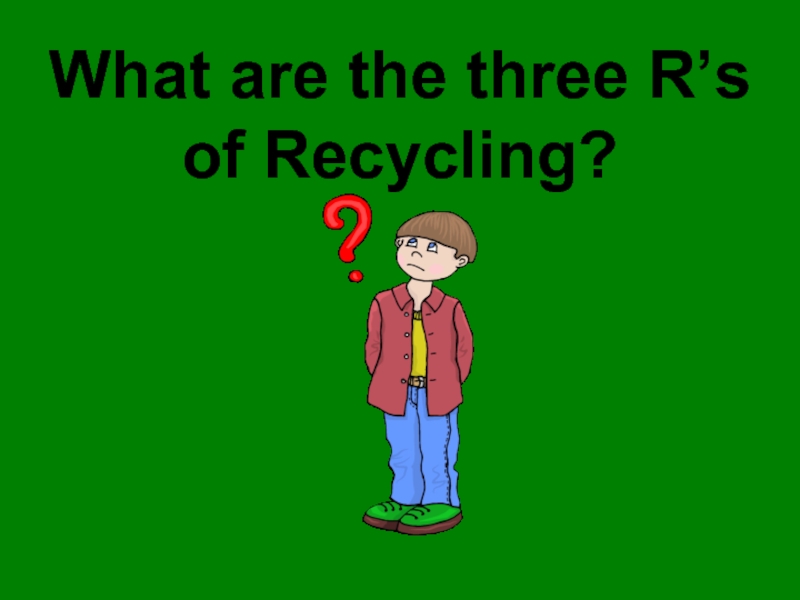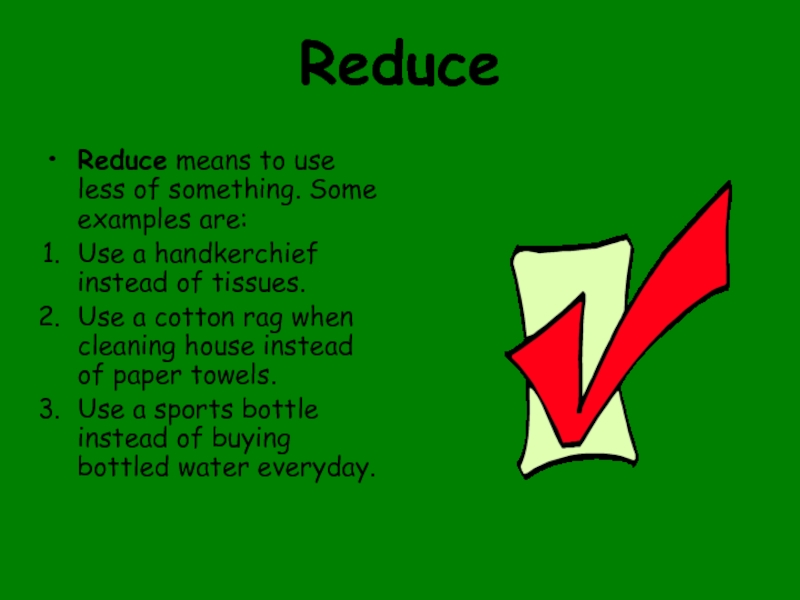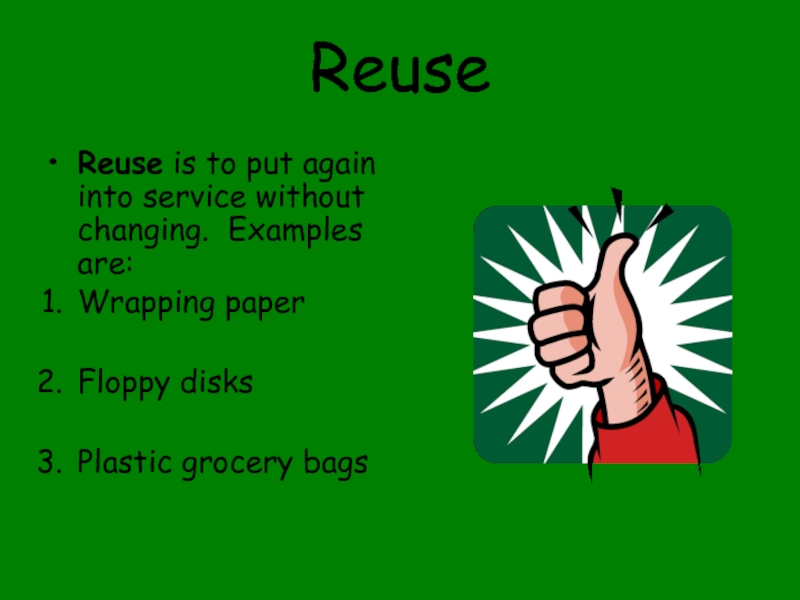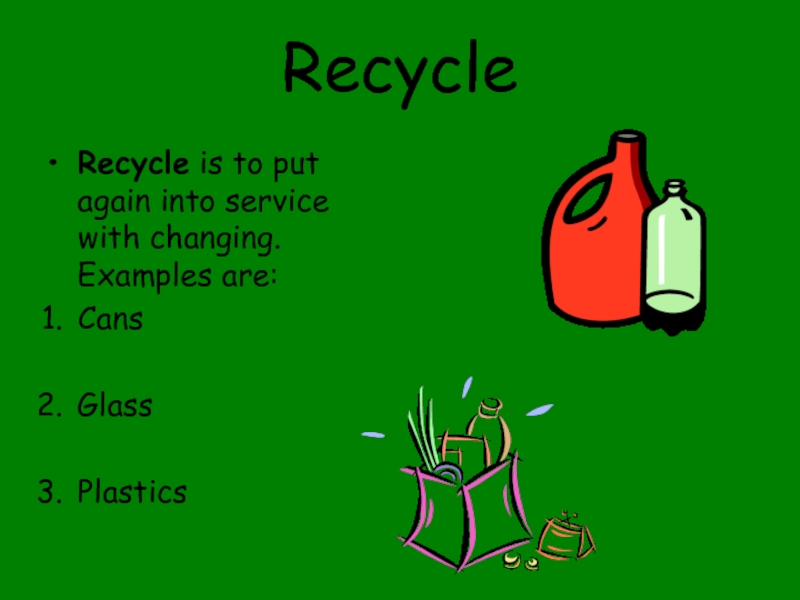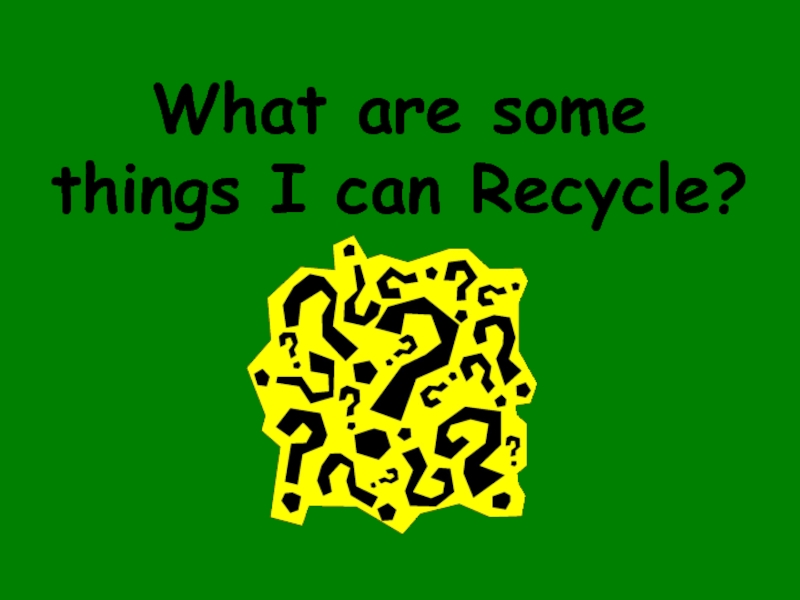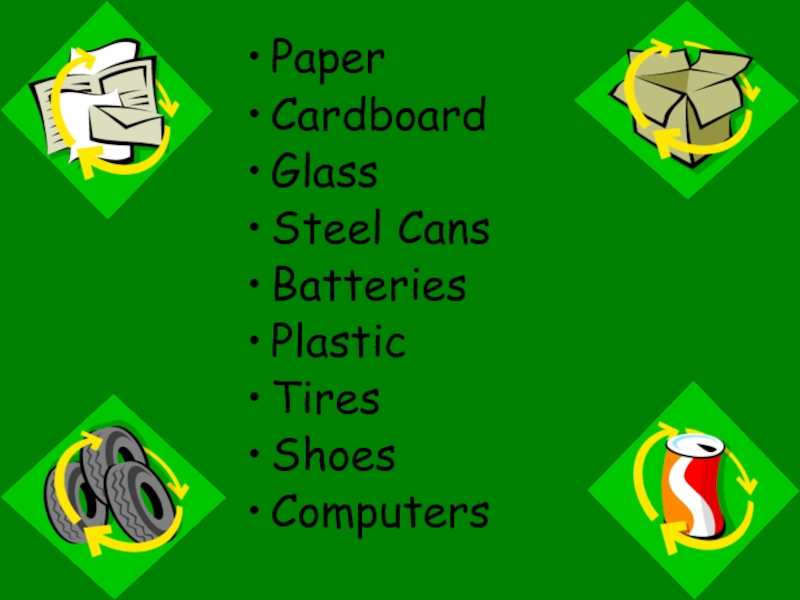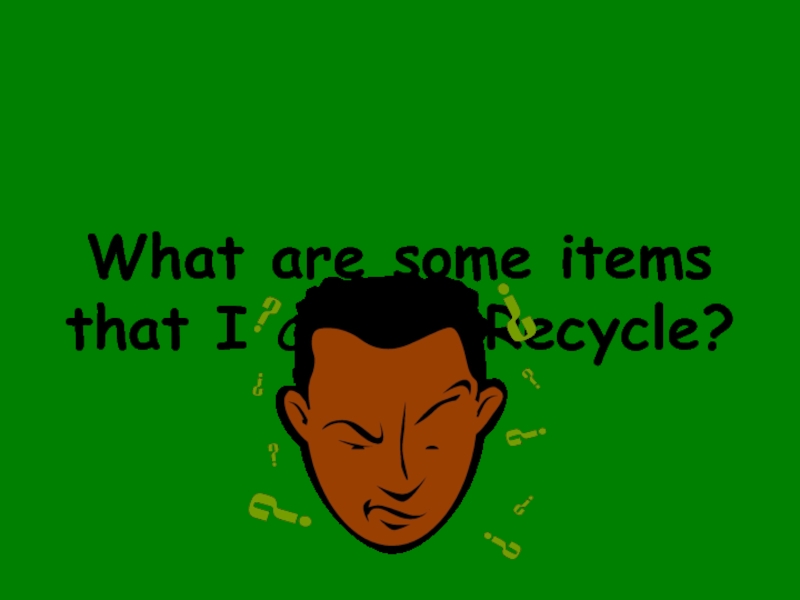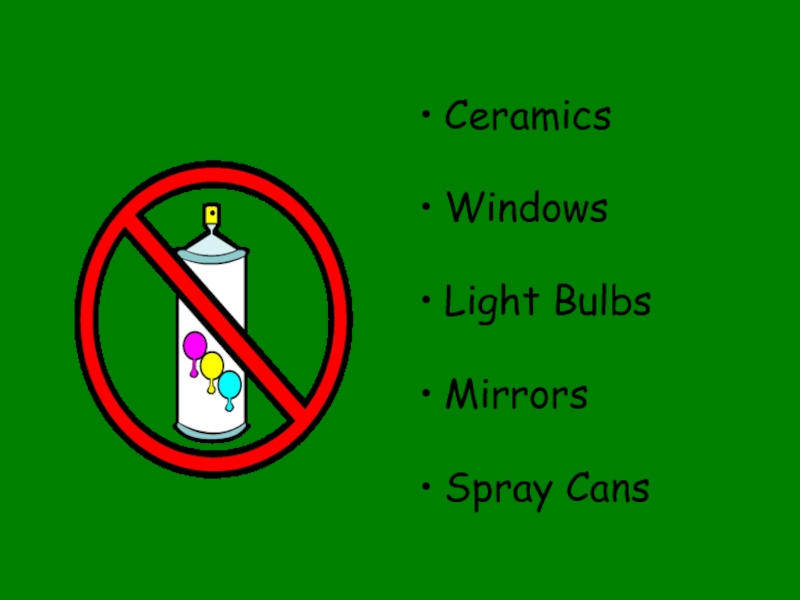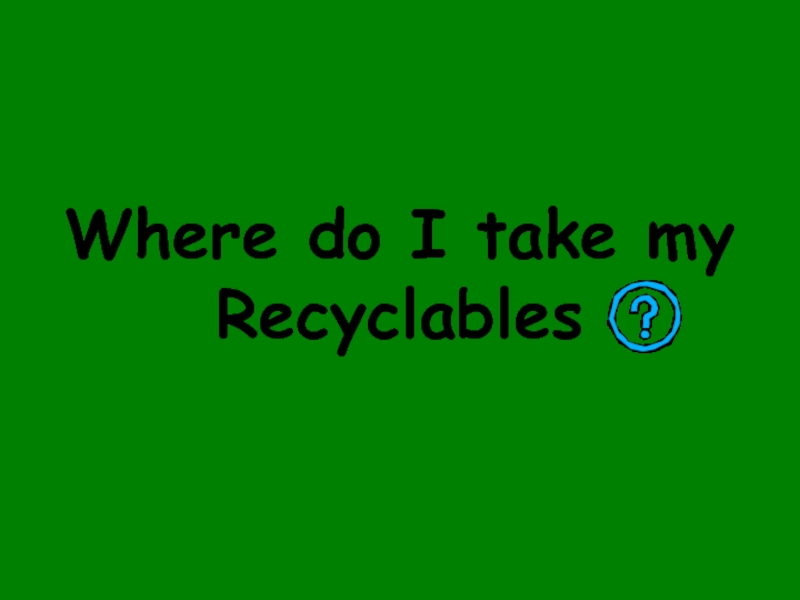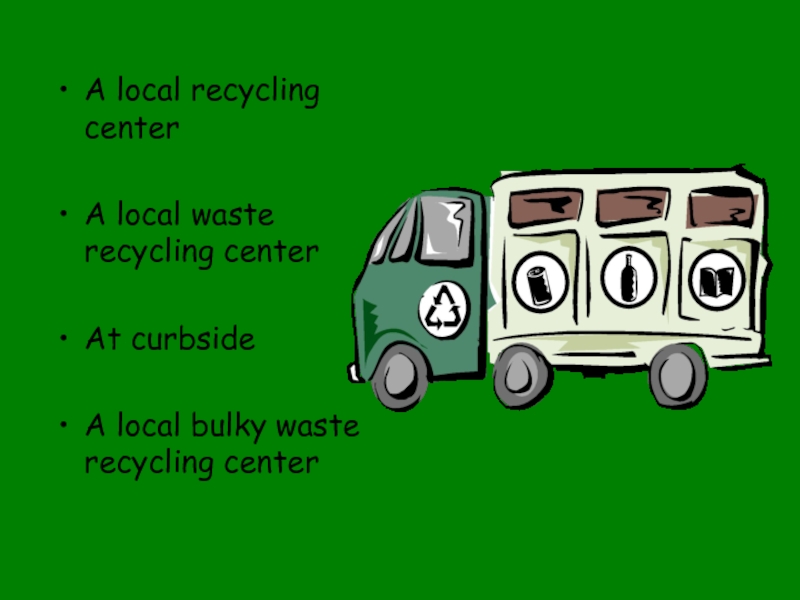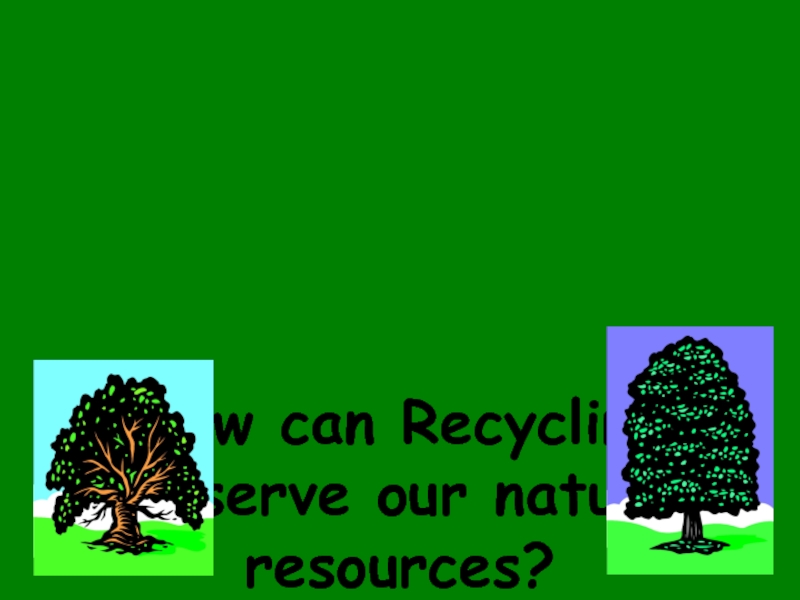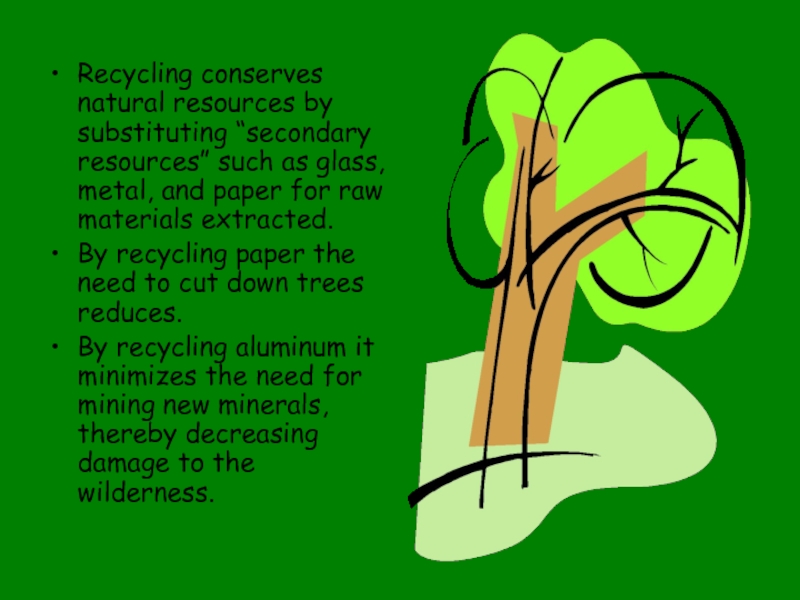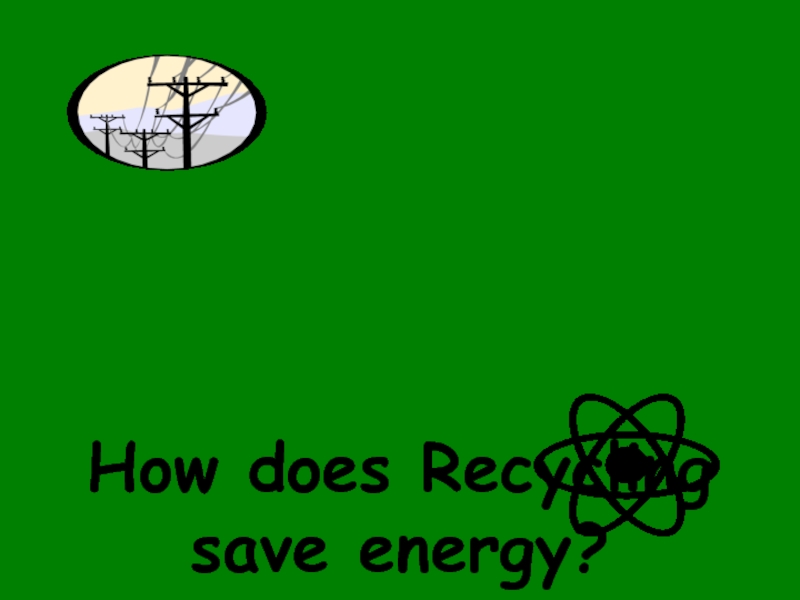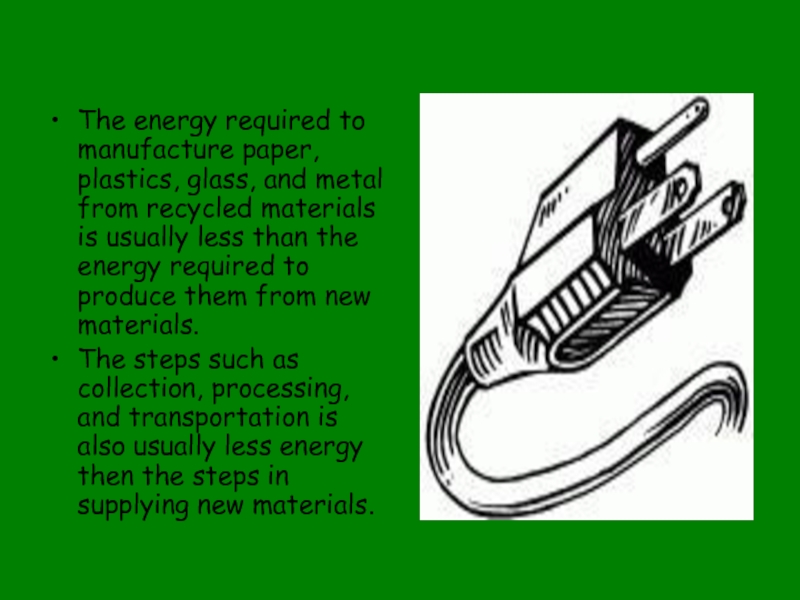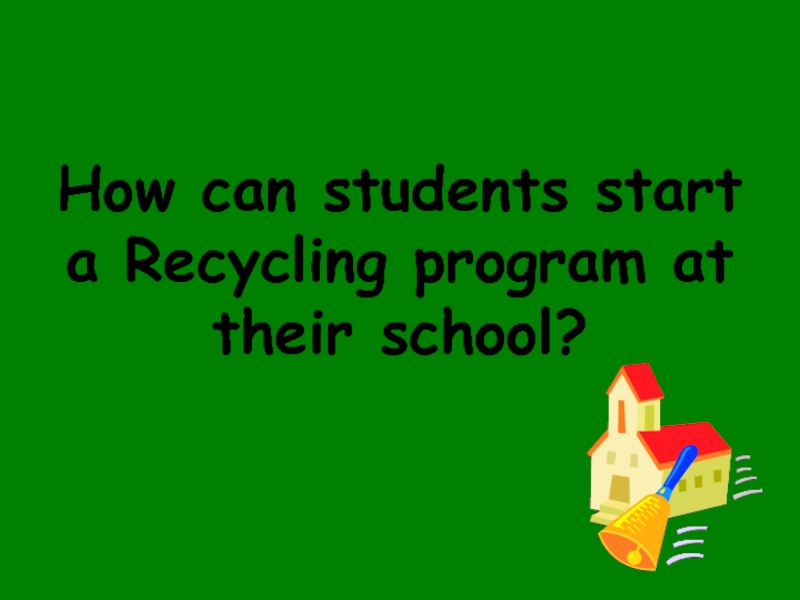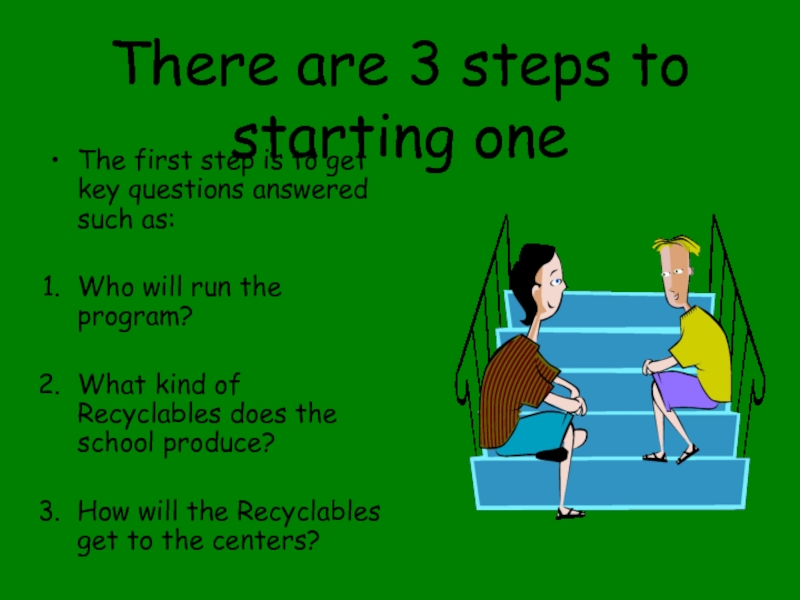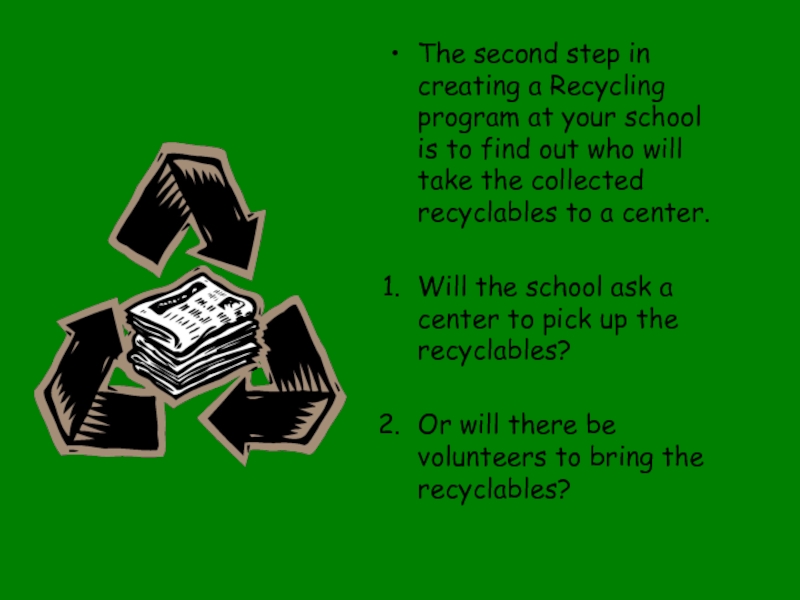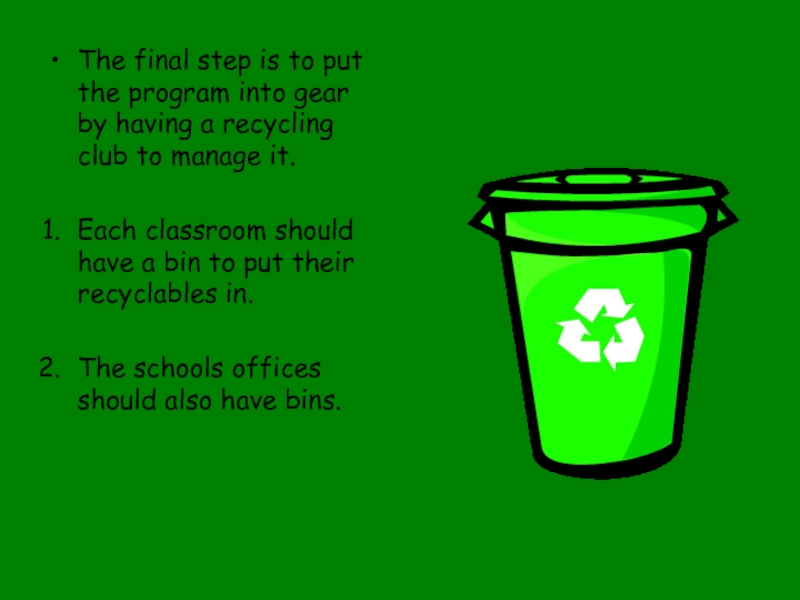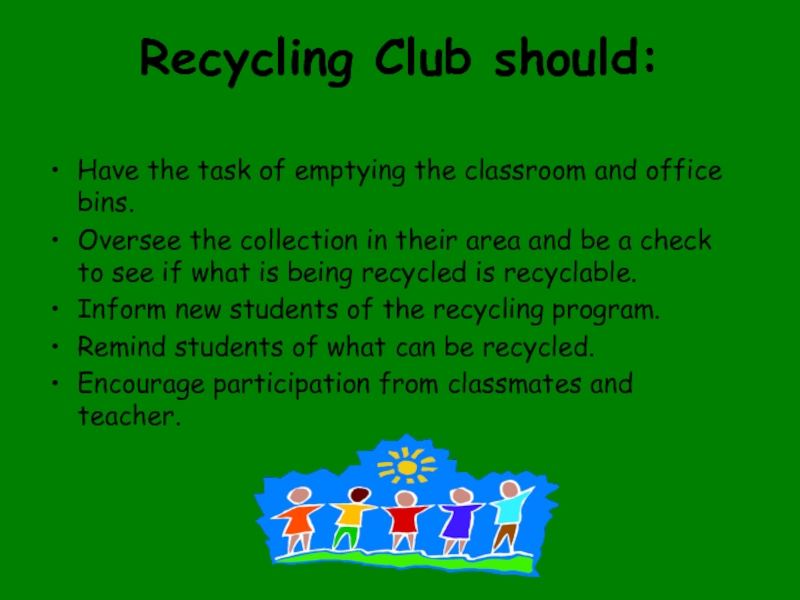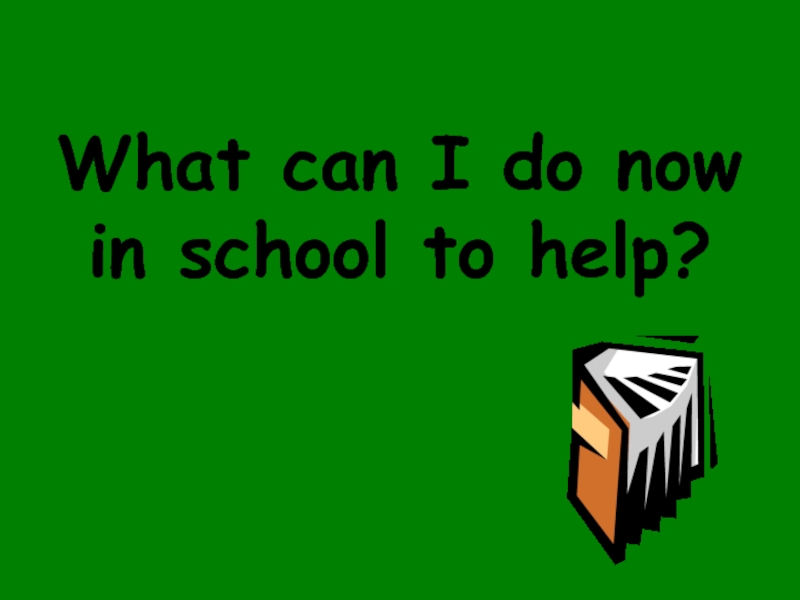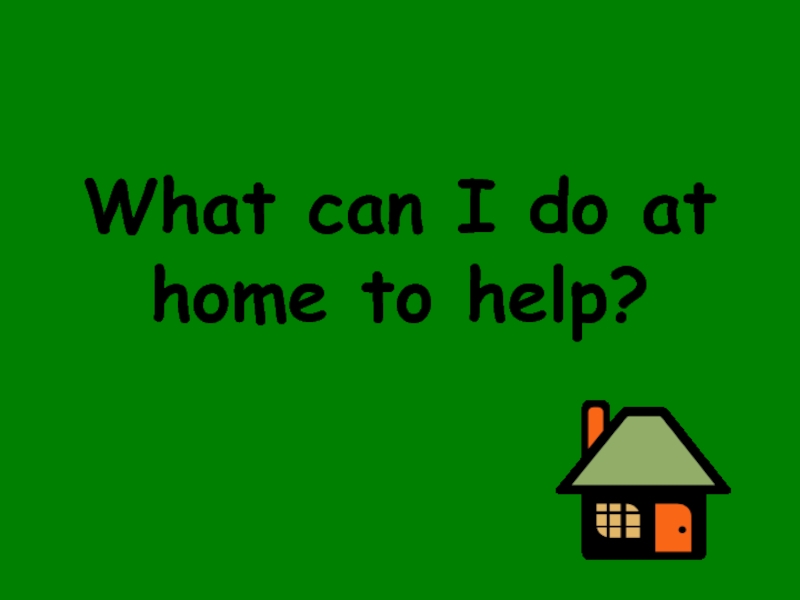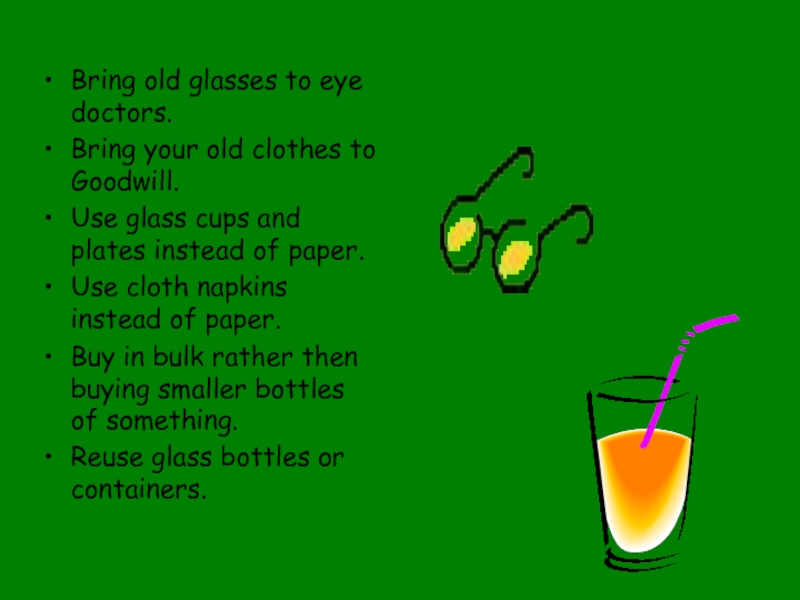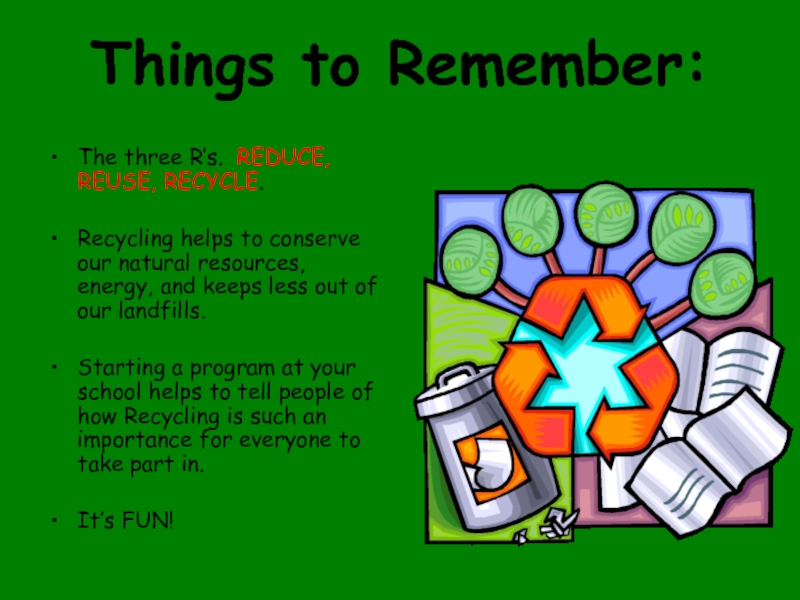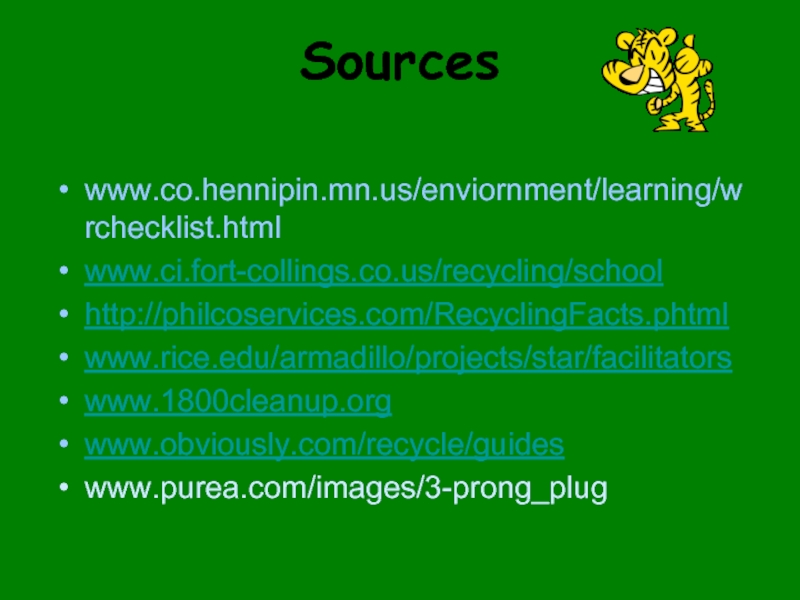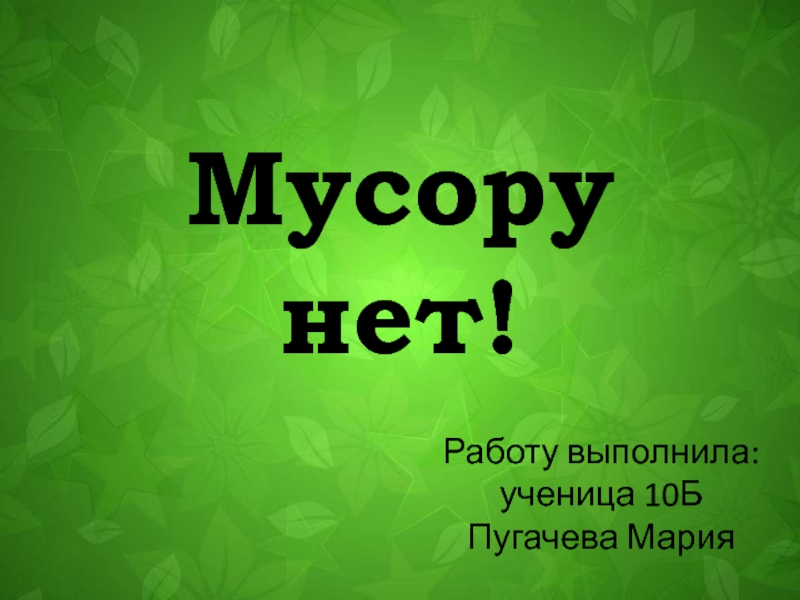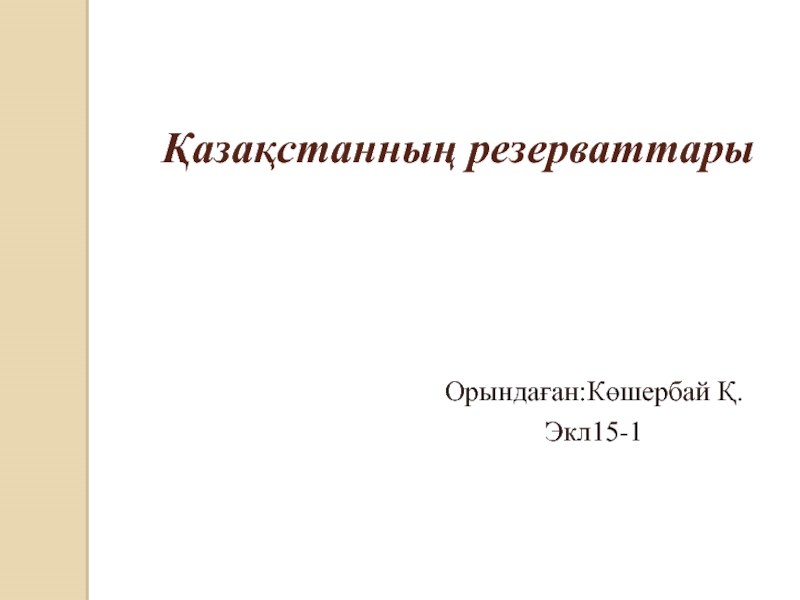- Главная
- Разное
- Дизайн
- Бизнес и предпринимательство
- Аналитика
- Образование
- Развлечения
- Красота и здоровье
- Финансы
- Государство
- Путешествия
- Спорт
- Недвижимость
- Армия
- Графика
- Культурология
- Еда и кулинария
- Лингвистика
- Английский язык
- Астрономия
- Алгебра
- Биология
- География
- Детские презентации
- Информатика
- История
- Литература
- Маркетинг
- Математика
- Медицина
- Менеджмент
- Музыка
- МХК
- Немецкий язык
- ОБЖ
- Обществознание
- Окружающий мир
- Педагогика
- Русский язык
- Технология
- Физика
- Философия
- Химия
- Шаблоны, картинки для презентаций
- Экология
- Экономика
- Юриспруденция
Recycling. What is Recycling? презентация
Содержание
- 1. Recycling. What is Recycling?
- 2. What is Recycling?
- 3. Recycling is a term used to describe
- 4. What does the Recycling Symbol Mean?
- 5. The first top arrow represents the collection
- 6. What are the three R’s of Recycling?
- 7. Reduce Reduce means to use less of
- 8. Reuse Reuse is to put again into
- 9. Recycle Recycle is to put again into
- 10. What are some things I can Recycle?
- 11. Paper Cardboard Glass Steel Cans Batteries Plastic Tires Shoes Computers
- 12. What are some items that I cannot Recycle?
- 13. Ceramics Windows Light Bulbs Mirrors Spray Cans
- 14. Where do I take my Recyclables
- 15. A local recycling center A local
- 16. How can Recycling conserve our natural resources?
- 17. Recycling conserves natural resources by substituting “secondary
- 18. How does Recycling save energy?
- 19. The energy required to manufacture paper, plastics,
- 20. How
- 21. There are 3 steps to starting one
- 22. The second step in creating a Recycling
- 23. The final step is to put the
- 24. Recycling Club should: Have the task
- 25. What can I do now in school to help?
- 26. Bring your lunch in reusable lunch bags
- 27. What can I do at home to help?
- 28. Bring old glasses to eye doctors. Bring
- 29. Things to Remember: The three R’s. REDUCE,
- 30. Sources www.co.hennipin.mn.us/enviornment/learning/wrchecklist.html www.ci.fort-collings.co.us/recycling/school http://philcoservices.com/RecyclingFacts.phtml www.rice.edu/armadillo/projects/star/facilitators www.1800cleanup.org www.obviously.com/recycle/guides www.purea.com/images/3-prong_plug
Слайд 3Recycling is a term used to describe a series of activities
that includes collecting recyclable materials that would otherwise be considered waste.
Слайд 5The first top arrow represents the collection of recyclable materials for
processing.
The bottom right arrow represents the recyclables being processed into recycled products.
The bottom left arrow is the most important. It represents when the consumer actually buys a product with recycled content.
The bottom right arrow represents the recyclables being processed into recycled products.
The bottom left arrow is the most important. It represents when the consumer actually buys a product with recycled content.
Слайд 7Reduce
Reduce means to use less of something. Some examples are:
Use a
handkerchief instead of tissues.
Use a cotton rag when cleaning house instead of paper towels.
Use a sports bottle instead of buying bottled water everyday.
Use a cotton rag when cleaning house instead of paper towels.
Use a sports bottle instead of buying bottled water everyday.
Слайд 8Reuse
Reuse is to put again into service without changing. Examples are:
Wrapping
paper
Floppy disks
Plastic grocery bags
Floppy disks
Plastic grocery bags
Слайд 15A local recycling center
A local waste recycling center
At curbside
A local bulky
waste recycling center
Слайд 17Recycling conserves natural resources by substituting “secondary resources” such as glass,
metal, and paper for raw materials extracted.
By recycling paper the need to cut down trees reduces.
By recycling aluminum it minimizes the need for mining new minerals, thereby decreasing damage to the wilderness.
By recycling paper the need to cut down trees reduces.
By recycling aluminum it minimizes the need for mining new minerals, thereby decreasing damage to the wilderness.
Слайд 19The energy required to manufacture paper, plastics, glass, and metal from
recycled materials is usually less than the energy required to produce them from new materials.
The steps such as collection, processing, and transportation is also usually less energy then the steps in supplying new materials.
The steps such as collection, processing, and transportation is also usually less energy then the steps in supplying new materials.
Слайд 21There are 3 steps to starting one
The first step is to
get key questions answered such as:
Who will run the program?
What kind of Recyclables does the school produce?
How will the Recyclables get to the centers?
Who will run the program?
What kind of Recyclables does the school produce?
How will the Recyclables get to the centers?
Слайд 22The second step in creating a Recycling program at your school
is to find out who will take the collected recyclables to a center.
Will the school ask a center to pick up the recyclables?
Or will there be volunteers to bring the recyclables?
Will the school ask a center to pick up the recyclables?
Or will there be volunteers to bring the recyclables?
Слайд 23The final step is to put the program into gear by
having a recycling club to manage it.
Each classroom should have a bin to put their recyclables in.
The schools offices should also have bins.
Each classroom should have a bin to put their recyclables in.
The schools offices should also have bins.
Слайд 24Recycling Club should:
Have the task of emptying the classroom and office
bins.
Oversee the collection in their area and be a check to see if what is being recycled is recyclable.
Inform new students of the recycling program.
Remind students of what can be recycled.
Encourage participation from classmates and teacher.
Oversee the collection in their area and be a check to see if what is being recycled is recyclable.
Inform new students of the recycling program.
Remind students of what can be recycled.
Encourage participation from classmates and teacher.
Слайд 26Bring your lunch in reusable lunch bags with reusable silverware.
Reuse paper
if you can.
When typing use a smaller font and bigger margins.
Use refillable pens and pencils.
When typing use a smaller font and bigger margins.
Use refillable pens and pencils.
Слайд 28Bring old glasses to eye doctors.
Bring your old clothes to Goodwill.
Use
glass cups and plates instead of paper.
Use cloth napkins instead of paper.
Buy in bulk rather then buying smaller bottles of something.
Reuse glass bottles or containers.
Use cloth napkins instead of paper.
Buy in bulk rather then buying smaller bottles of something.
Reuse glass bottles or containers.
Слайд 29Things to Remember:
The three R’s. REDUCE, REUSE, RECYCLE.
Recycling helps to conserve
our natural resources, energy, and keeps less out of our landfills.
Starting a program at your school helps to tell people of how Recycling is such an importance for everyone to take part in.
It’s FUN!
Starting a program at your school helps to tell people of how Recycling is such an importance for everyone to take part in.
It’s FUN!
